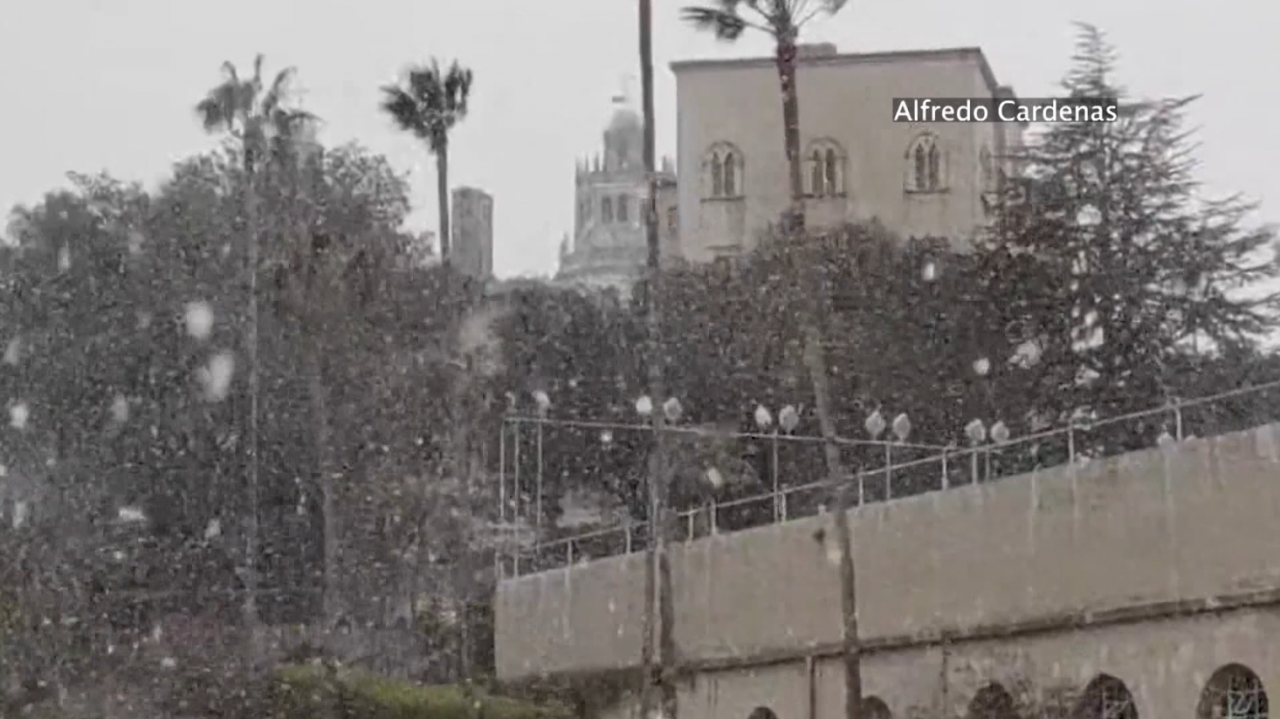The Central Coast is no stranger to bad weather. In the 70 years KSBY has been on the air, the area has seen everything from extreme cold conditions and snow to blazing hot temperatures... from the extremes of drought to the swells of flooding.

Here is a look back at some of the most significant weather the Central Coast as seen in 70 years:
In recent memory, the very hot and windy conditions that preceded the Thomas Fire in December 2017 are right up there. Much of Southern California experienced some of the strongest and longest duration Santa Ana winds in some time. In fact, the region had been pounded for weeks with on-and-off Santa Ana events. The fire itself broke out near Santa Paula on the evening of December 4. The region had been extremely dry, and the first rains of the season hadn't arrived yet. The Thomas Fire caused more than $2 billion worth of damage.

When the rains did come a month later, the land couldn't hold all that moisture. The Montecito Mudslide happened only a month later on January 9. Triggered by record rainfall, the hills burned by the Thomas Fire gave way all at once. Twenty-three people died and more than 160 were injured. A strong low-pressure system and cold front developed off the coast of California on January 5, 2018. The system moved onto the mainland on January 8, bringing heavy rain to Santa Barbara and Ventura counties. The storm intensified on the following day, with at least four inches of rain falling over the two-day period. At 3:30 a.m. 0.66 inches of rain dropped in just 15 minutes and that's when the horror began. Evacuations had been ordered but nothing on this scale was in anyone's memory. Now the area is regularly evacuated for heavy rain events including this year on the mudslide's fifth anniversary.
The Montecito mudslide isn't the only time the hills have come down on a community.

La Conchita, California has a history of big mudslides — twice in March 1995 with no loss of life and notably in 2005 when a section of the hill 1,150 feet long and 330 feet wide destroyed 13 houses and severely damaged 23 others. There were 10 confirmed fatalities.

The flooding of 1969 is also an epic Central Coast weather event people will never forget. At the time, they called it the 100-year flood. Flood waters filled the streets of Central Coast cities.

More than half of the season's rainfall came down in two days in 1969. Near the end of that 48 hours, after the ground was saturated, a full inch of rain fell in 25 minutes.

It was an epic 10-day event.
A second 100-year flood struck in January 1973. Another huge flood hit in 1995.

There was, of course, January 9 of 2023. Yes, this year's biggest flood event is one of the all-time worst for the Central Coast.
Central Coast weather also has run from very hot to very cold in the last 70 years.

Snow is very rare on the Central Coast. But this year saw rare snowfall for the Central Coast including snow as low as 1,000 feet, dropping flakes on the Cuesta Grade. While that snow event is recent in memory, the 1989 snow in northern SLO County put measurable snow down in Atascadero and Paso Robles. This was extremely rare, and we've seen nothing like it since.

Heat and drought are much more common. Prior to this year, the Central Coast and most of the American West were considered to be in two kinds of drought: the short-term drought where lakes and reservoirs and aquifers were all running low or even close to dry; and all of that inside the larger mega-drought scientists believed was the worst in 1,200 years.

The 2021-22 rain season got off to a quick start with big rains in October and again in December of 2021 but then we hit a three-month all-time dry period to begin 2022 where virtually no rain fell for the first the months of the year (in the peak of the rain season). It was a La Niña year and fears were that 2022-23 would also be a disappointment with a fading La Niña expected, but then a unicorn rain year developed. It got off to a slow start from October through December, and then January 9 happened. A strong atmospheric river drilled the Central Coast with feet of rain in just a few days. Flooding ravaged the area. There were several fatalities including the loss of 5-year-old Kyle Doan, ripped from his mother's arms near San Miguel when her car was trapped in flood waters while she was taking Kyle to school.

The 2022-23 rain year never seemed to let up with more storms which continued to buckle roads and damage all kinds of infrastructure. Despite the misery, there was a benefit. Defying all reasonable expectations, the drought ended everywhere in California. Lakes once too low to launch a boat in were spilling for the first time in decades. So much rain fell that some conservation efforts were ended.

One thing is certainly true of the Central Coast: it is an area of extremes. It is an area where "average" weather does happen often in spring and fall but winter and summer have very high variability forcing people that live here to literally be ready for everything.





